Edith Wharton and Rich People With Bad Taste
What Wharton's design treatise can tell us about Shivs and Kendalls of today.
If anyone knows rich people, it’s Edith Wharton. To start, she was one. Her father’s family (surname Jones) was said to be the “Joneses” you should be keeping up with. Second, pretty sure The Age of Innocence is the epitome of “write what you know.” And at age nine, Edith caught typhoid fever while on vacation with her family at a spa in the Black Forest — which might as well be a literal Succession logline.
Aside from marking her legacy as one of literature’s most trailblazing women, Wharton was also super into interior design, so much so that in 1897, she published a book called The Decoration of Houses.
Co-written with her friend, architect and decorator Ogden Codman, it’s an intensely detailed guide on how one’s home (*if you’re $$$) should look. Her book sought to educate the rich on “good taste,” which is sort of like the modern-day equivalent of telling Britney Spears that her beige marble floors and column-flanked living room is…bad. Just bad.
(Britney Spears’ Calabasas living room)
The TL;DR of The Decoration of Houses is Wharton hated "Victorian clutter" like heavy drapery and rooms with too much furniture. She was essentially subtweeting the Vanderbilts and their garish displays of Gilded Age wealth, and asking that homeowners respect the architecture of a room, using physical structure as a guide to embrace “simplicity” and a more Euro-centric aesthetic. (So, basically, cluttercore was having a moment and Wharton was like, hey now, let’s not do that.)
In theory, this all sounds great. But. Butbutbutbutbutttttt. As a lady of modern times, I’m really having a tough time making the distinction between Sir New Money with a stair runner that’s too gaudy vs. Madame Ye Olde Money who just “gets” “simple” design. To wit: Wharton uses an example of a client who might desire a space inspired by a state room at Versailles. The more reasonable solution, she explains, would be to emulate one of the “simple pannelled rooms” of King Louis XIV’s palace.
Sorry, but. You can’t say boooooo to The Breakers, and then be like, Versailles: You can make it work! Like, if she’s advocating for simplicity, how does she then justify her obsession with all things marble marble marble everywhere more MARBLE! In 2023, it doesn’t stack up.
Okay, that aside, there’s some great advice in her book, and the chapter on “Bric-à-Brac” is hilariously on-point, where she offers such guidance as:
“Decorators know how much the simplicity and dignity of a good room are diminished by crowding it with useless trifles. Their absence improves even bad rooms, or makes them at least less multitudinously bad.”
Ugliness, and the eradication of it, was central to Wharton’s existence. Even in her autobiography she mentions feeling “vaguely afraid of ugliness” as a young girl, and this suggestion of how to deal with it in The Decoration of Houses feels very philosophical:
“There are but two ways of dealing with a room which is fundamentally ugly: one is to accept it, and the other is courageously to correct its ugliness. Half-way remedies are a waste of money and rather to call attention to the defects of the room than to conceal them.”
Now on to the present. These days, rich people with poor taste fall squarely into four different categories — at least as it applies to architecture/decor – where there are varying degrees of supposed simplicity vs. clutter.
New money haters of anything antique who buy angular boxes devoid of happiness where everything is black and gray and significant space is devoted to temperature-controlled, glass-walled wine rooms. The unwritten rule here is cabinets and drawers must not ever, never, under no circumstances, contain any type of pull or handle. Too proletariat.
(Brentwood home offered at $21 million.)
People for whom money never bought happiness, and it instead caused a childhood regression so great that their homes contain sports bars, amusement parks, ‘50s-style diners, underground Christmas towns. It is all boredom and frantic searching for a shred of a feeling. See: The Yankee Candle magnate whose property includes a bowling alley, arcade, indoor tennis court, and an indoor water park.
(The underground water park that Yankee Candle built.)
Hoka-wearing History majors who call themselves “upper middle class” (with $3 million in the bank) in search of quote-unquote "good flips" that attempt to turn everything into a sexy farmhouse but are literal photocopies of a base home with herringbone floors, black board-and-batten cladding, and steel doors. (Basically a Kardashian house.)
(Studio City home offered at $4.475.)
And finally, #moneycore: modern-day Vanderbilts whose decor style is to display wealth through the means of scale. In come the columns, the marble flooring, mezzanines skirted by Grecian-inspired balustrades, “Tuscany.”
(“Tuscan-style estate,” as told through realtor’s description, listed at $38.5 mil.)
So, who is to blame for for this particular era (circa 1997-present) of Rich People With Bad Taste? To name a few: Donald Trump. Sandy and Kirsten Cohen. That couple with the timeshare company that tried to build a second Versailles. And of course, MTV Cribs.
For millennials, MTV Cribs was our first entree into the world of homeownership, defining the American Dream in terms of white leather couches, cream-hued atriums, gothic-inspired carved wood chairs, fish tanks, white pianos, and “antiques.”
Is Mariah Carey's Cribs tour — among the most storied in the series’ run — in poor taste? Borderline. Those “glazed” walls will go down in history, and even ballerina Misty Copeland cited Mariah’s influence in the high-gloss lacquer the dancer used in her home. But what Mariah’s tour highlights is a fifth rich-with-bad-taste persona that stretches across all four categories we’ve previously discussed: the person who is sad and using wealth as a facade.
Mariah basically says it all when she shows off that screening room with a popcorn machine and she's like, "My friends can snack and I can eat like one thing."
Nowhere is this melancholia-core more apparent these days than in the brilliance of HBO’s Succession, where interiors largely have no viewpoint other than to imply that they have been expensively designed to keep up with current uber-rich NYC Joneses.
The homes of Shiv, Roman, and Kendall Roy offer no reflection of character or personal taste — they are turnkey, often with the same ubiquitous $26k Lindsey Adelman chandelier that you find in any Manhattan listing over $20 million. (Not dissing Adelman, but if it’s unique lighting that you want to throw your money at, at least check out In Common With or Ladies & Gentlemen Studio.)
The Roy kids are emblematic of a rare breed of the moneyed elite who are able to escape being labeled as having “bad” taste; they simply have none. Does their decoration follow Wharton’s standard of respecting space and architecture? I don’t even know how to answer that when these people live in boxes like five miles above the ground. Wharton would find it tough to see the practicality in that. (The exception to the Roys’s extravagant blandness might be Logan. Edith, I daresay, would find his 5th Avenue mansion just glorious.)
The Decoration of Houses was a huge success in its era, becoming a bible responsible for an emerging American style. And I’d argue that the only other book with similar influence would be Virginia McAlester’s A Field Guide of American Houses (1987, rev. 2015), an exhaustive visual encyclopedia of architectural components, building materials, and house styles across the U.S. Like Wharton, McAlester was a society lady, the daughter of a Dallas mayor and a Radcliffe grad, but her intent was more democratic and inspired by a passion for preservation.
When divorced from its original context, Decoration still perhaps offers great basic principles of scale and symmetry, but is more useful (at least in my opinion) as a prompt for exploring aesthetics and class. I wholeheartedly appreciate Wharton’s mission of eradicating the odious “expensive/ugly” category (which is still unaccomplished as evidenced by every client featured on Selling Sunset), and her chutzpah for being, like, the OG influencer, but a lot of this book is so preachy that it makes me feel like this:
Which is to say that rich people — even the ones with impeccable taste — can be a drag. But this news to no one.


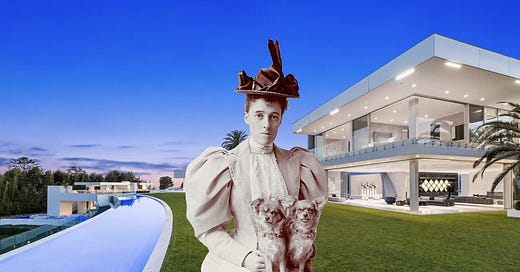




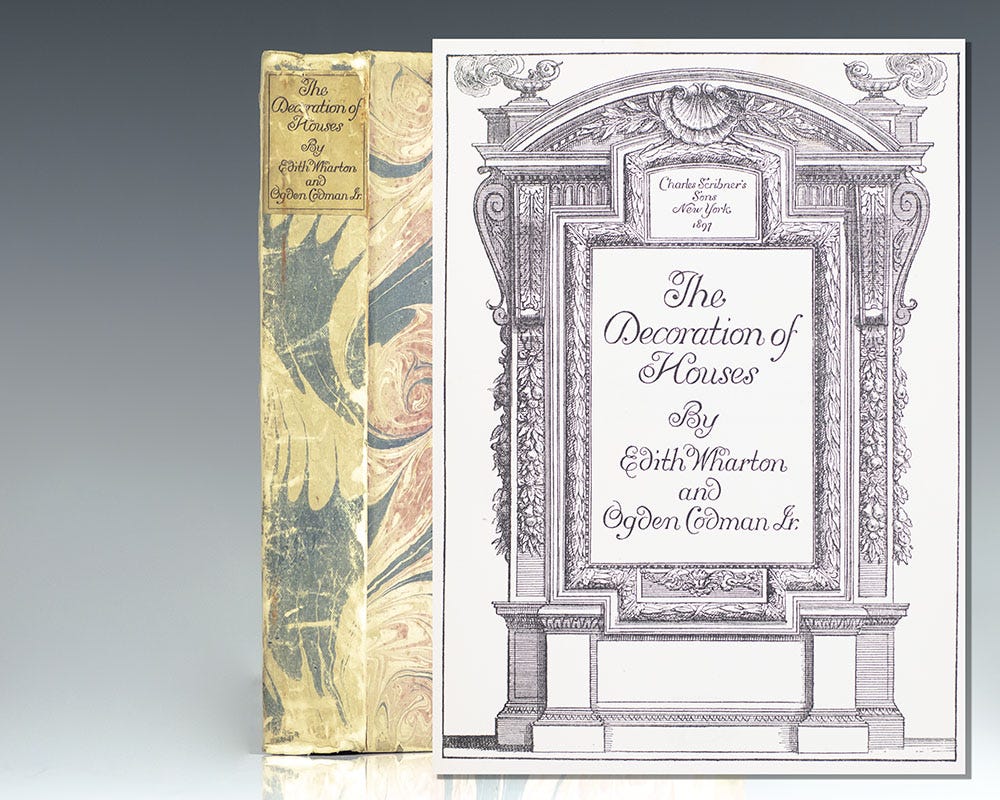

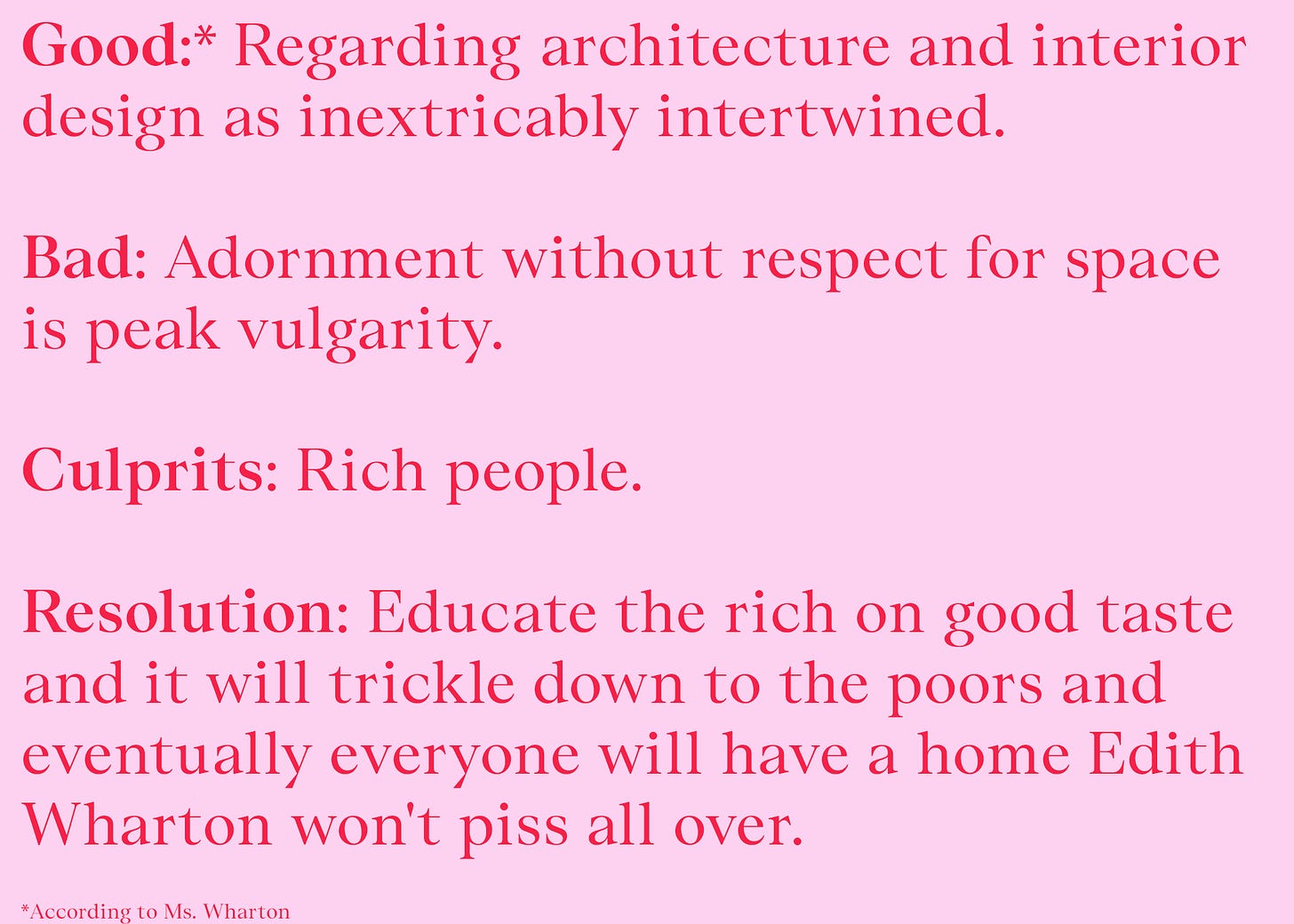
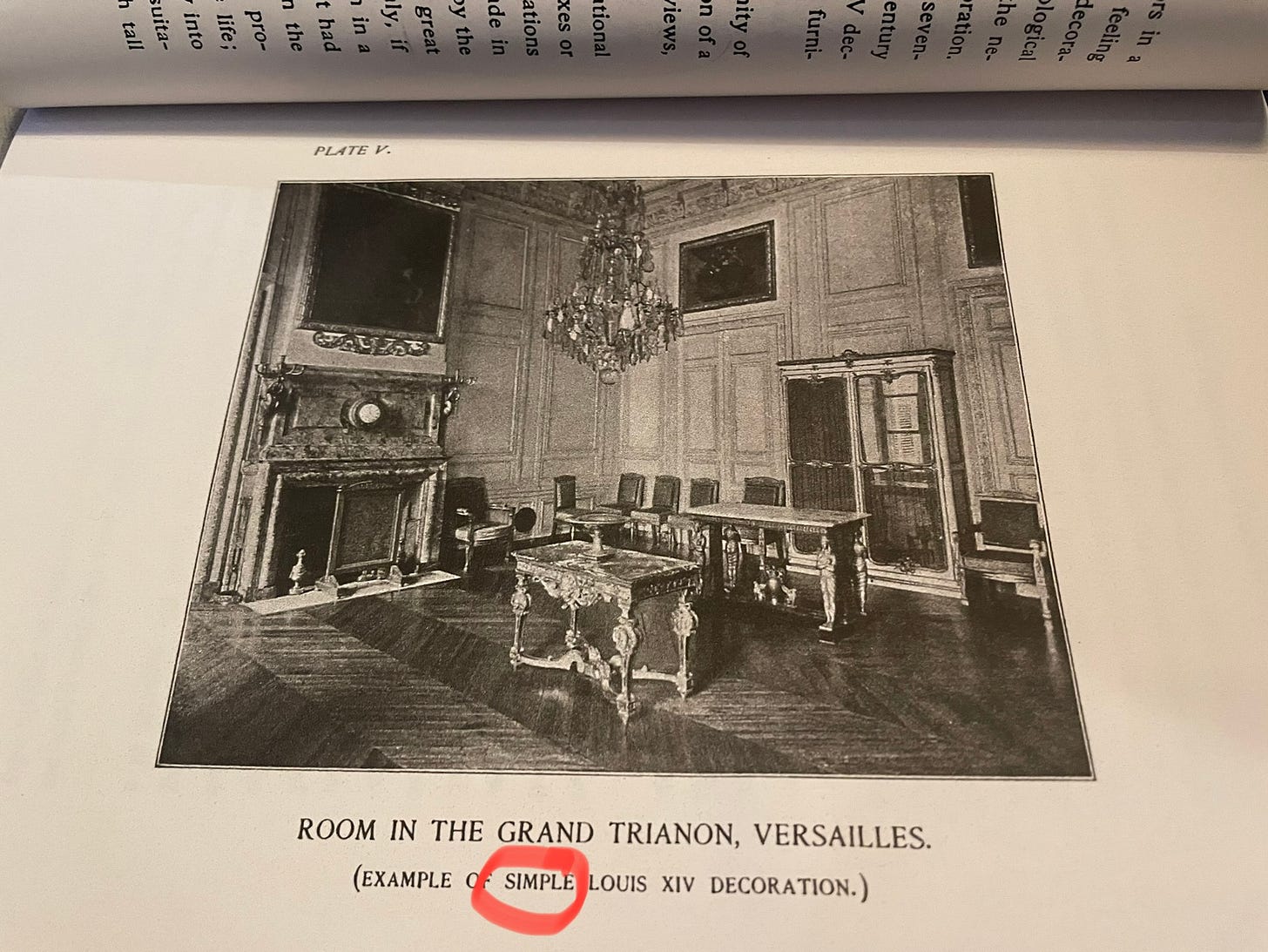



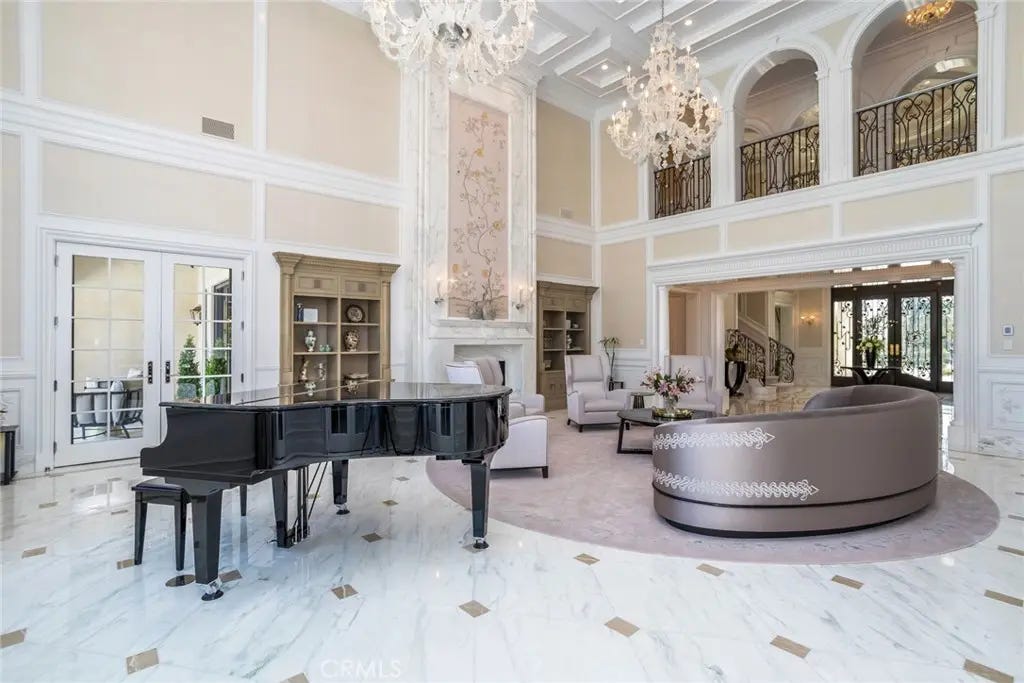


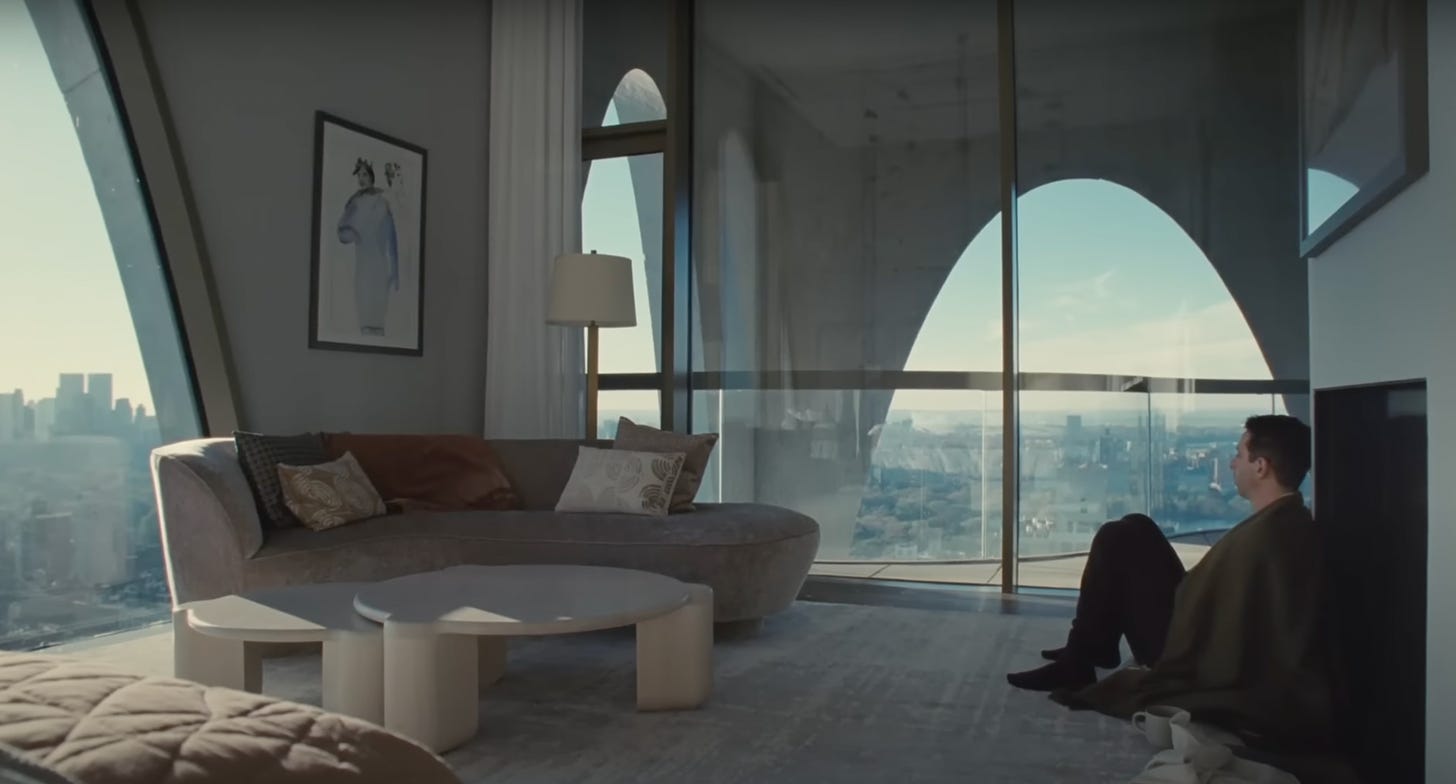


UGH "TURNKEY RICH" IS THE MOST EXHAUSTING!!!!!
Money, it’s wasted on the rich.